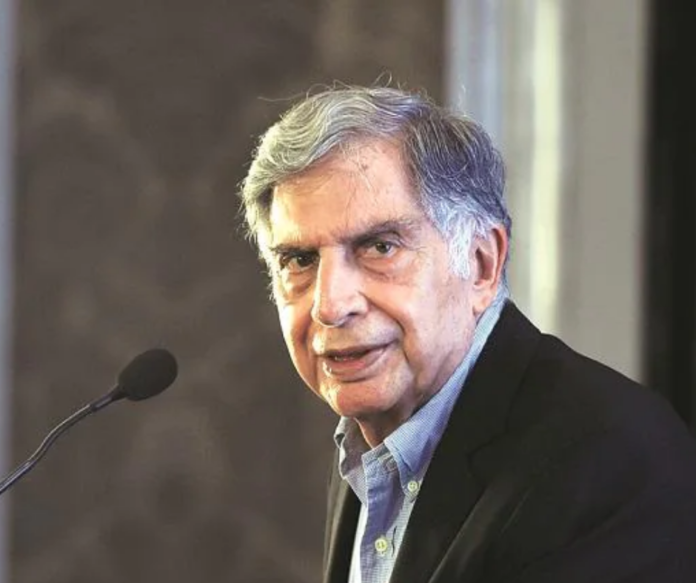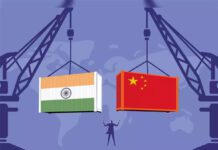“If you want to walk fast, walk alone. But if you want to walk far, walk together.”
-Ratan Tata
Imagine being born in the pre-independence era of India; in the late 1930s. Your parents have divorced, your father has remarried, you live with your grandmother and you’ve got a step-sibling. But imagine, you still have hundreds of people claiming you’re a lucky child because your family earns more money than the most!
The life story of Ratan Naval Tata is very reminiscent of famous comedian Jim Carrey’s quote, in which he mentioned, “I think everybody should get rich and famous and do everything they ever dreamed of so they can see that’s not the answer.”
While thousands are born with a silver spoon, it takes the right kind of man to turn that spoon into gold. Here are some untold stories of the former chairman of the ‘Tata Sons’ that will not only inspire you but would also heal all the wounds, self-doubt, anxiety and solitude has left on you.
The first lines in his story were written years before he was even born. It all started when his grandmother, Navajibai Sett, adopted his father, Naval Tata. Years later, he was born to Sonoo Tata, the first wife of his father. Ratan Tata was forced to grow up quicker than the children his age after his parents divorced when he was just 7 years of age. He lived with his grandmother while also taking care of his younger brother, Jimmy Tata. He was a scared child looking for someone to give him some direction, which he couldn’t buy from any sum of money.
Thankfully, his grandmother became his backbone, helping him grow into adulthood, while she grew older. And while no compromises were made on his education, no school could teach him what it was like to live in a sheltered house with parents being your roof.
He also had a step-brother by the name of Noel Tata and this addition of relation started with controversies in his family. However, despite all the personal turmoils and demons he had to face every day, he never stopped. This essay will give you an insight into the life of this famous Indian model Billionaire: Ratan Tata
Short biography of Ratan Tata:
Ratan Naval Tata is an Indian industrialist, philanthropist, and former chairman of Tata Sons. He was also chairman of Tata Group, from 1990 to 2012, and again, as interim chairman, from October 2016 through February 2017, and continues to head its charitable trusts. He is the recipient of two of the highest civilian awards of India, the Padma Vibhushan in 2008 and Padma Bhushan in 2000.
Born in 1937, he is a scion of the Tata family, and son of Naval Tata who was later adopted by Ratanji Tata, son of Jamsetji Tata, the founder of Tata Group. He is an alumnus of the Cornell University College of Architecture and Harvard Business School through the Advanced Management Program that he completed in 1975. He joined his company in 1961 when he used to work on the shop floor of Tata Steel, and was the apparent successor to J. R. D. Tata upon the latter’s retirement in 1991. He got Tata Tea to acquire Tetley, Tata Motors to acquire Jaguar Land Rover, and Tata Steel to acquire Corus, in an attempt to turn Tata from a largely India-centrist group into a global business.
Early Childhood and education:
Born on 28 December 1937 in Bombay, British India (present-day Mumbai), Ratan Tata is the son of Naval Tata and Sooni Commissariat. They got separated when Ratan Tata was 10 years old. He was then formally adopted by his grandmother and widow of Sir Ratanji Tata—Navajbai Tata—through the J. N. Petit Parsi Orphanage. Ratan Tata was raised with his half-brother Noel Tata (son of Naval Tata and Simone Tata).
The 84-year-old attended Campion School, Mumbai, Cathedral and John Connon School, Mumbai, Bishop Cotton School, Shimla, and Riverdale Country School in New York City. He is an alumnus of Cornell University and Harvard Business School.
Ratan Tata as Chairperson of Tata Sons
When JRD Tata stepped down as the chairperson of Tata Sons in 1991, he named Ratan Tata his successor. He faced stiff resistance from many companies heads who spent decades in their respective companies. Tata began replacing them by setting a retirement age. He further made it compulsory for each company to report to the group office. Under his leadership, the overlapping companies of Tata Sons were streamlined into a synergized whole. In 1962, he joined the Tata Group and his first job involved working with the Tata Steel division in Jamshedpur, where he worked with the blue-collar employees shovelling stones and working with the furnaces.
He was appointed the Director-in-Charge of the National Radio & Electronics Company Limited (Nelco) in 1971 and was successful in turning Nelco around. Tata later paved his way to becoming the Chairman of Tata Industries and was instrumental in ushering in a wide array of reforms. It was under his stewardship that Tata Consultancy Services went public and Tata Motors was listed in the New York Stock Exchange giving it more international power and recognition. He is credited with leading the Tatas’ successful bid for Corus- an Anglo-Dutch steel and aluminium producer as well as Jaguar and Land Rover brands from the Ford Company.
During his 21 years of stewardship, revenues grew over 40 times, and profit over 50 times. He got Tata Tea to acquire Tetley, Tata Motors to acquire Jaguar Land Rover, and Tata Steel to acquire Corus, turning the organization from a largely India-centric group into a global business.
He also conceptualized the Tata Nano car. The car was capped at a price that was within the reach of the average Indian consumer.
Upon turning 75, Ratan Tata stepped down as the Chairperson of Tata Sons on 28 December 2012. Cyrus Mistry was named his successor, however, the Board of Directors and Legal division voted for his removal on 24 October 2016 and Ratan Tata was then made the group’s interim chairman.
A selection committee comprising of Ratan Tata, TVS Group head Venu Srinivasan, Amit Chandra of Bain Capital, former diplomat Ronen Sen, and Lord Kumar Bhattacharya was formed to find the successor of Ratan Tata. The committee named Natarajan Chandrasekaran as the Chairperson of Tata Sons on 12 January 2017.
Ratan Tata invested his savings in Snapdeal, Teabox, and CashKaro.com. He also invested in Ola Cabs, Xiaomi, Nestaway, and Dogspot.
Philanthropic Work of Ratan Tata
Being a supporter of education, medicine, and rural development, Ratan Tata supported the University of New South Wales Faculty of Engineering to provide improved water for challenged areas.
Tata Education and Development Trust endowed a $28 million Tata Scholarship Fund that will allow Cornell University to provide financial aid to undergraduate students from India. The annual scholarship will support approximately 20 students at a given time.
Tata Group companies and Tata charities donated $50 million in 2010 to Harvard Business School (HBS) for the construction of an executive centre.
Tata Consultancy Services (TCS) donated $35 million to Carnegie Mellon University (CMU) for a facility to research cognitive systems and autonomous vehicles. It is the largest ever donation by a company and the 48,000 square-foot building is called TCS Hall.
Tata Group donated Rs. 950 million to the Indian Institute of Technology, Bombay in 2014 and formed Tata Center for Technology and Design (TCTD). It was the largest ever donation received in the history of the institute.
Tata Trusts also provided a grant of ₹750 million to the Centre for Neuroscience, the Indian Institute of Science, to study mechanisms underlying the cause of Alzheimer’s disease and to evolve methods for its early diagnosis and treatment.
Tata Group also formed the MIT Tata Center of Technology and Design at Massachusetts Institute of Technology (MIT) to address the challenges of resource-constrained communities, with an initial focus on India.
Tata set a perfect example of generosity and leadership during the 26/11 attacks. Unarmed he stood all alone outside the Taj hotel and supervised the activities to help the victims. He showcased his humane gesture by personally visiting the families of all the 80 employees who were killed or injured. He left no stone unturned to provide relief to the victims and even asked the families and dependents as to what they wanted him to do.
Ratan Tata’s Wife
“I came close to getting married four times and each time I backed off in fear or for one reason or another,” said Ratan Tata in 2011.
He once loved a girl in Los Angeles while working there and had to return to India as his family member was ill. The girl’s parents didn’t allow her to go to India. Tata stood by his commitment and is unmarried to date.
Achievements of Ratan Tata during his tenure
During his tenure, the company witnessed the launch of India’s first truly Indian car, ‘Indica’. The car was the brainchild of Tata. In 2000 Tata’s food division acquired tea firm, Tetley, for GBP 70 million. In the year 2009-10 the group’s revenues have grown nearly 12-fold, totalling USD 67.4 billion. Tata also serves on the boards of Fiat SpA and Alcoa and is also on the international advisory boards of Mitsubishi Corporation, the American International Group, JP Morgan Chase, Rolls Royce, Temasek Holdings and the Monetary Authority of Singapore.
Awards and Honours
In the year 2000, he was honoured with Padma Bhushan by the government of India. He was also conferred an honorary doctorate in business administration by Ohio State University, an honorary doctorate in technology by the Asian Institute of Technology, Bangkok, and an honorary doctorate in science by the University of Warwick. Tata has a personal fortune of GBP 300 million and owns less than 1% of the colossal group. Over two-thirds of Tata Group is owned by charitable trusts that finance good causes.
His retirement may still be a year away, but Tata has started chalking out plans on his post-retirement. He plans to set up a design centre of international standards and scale. He has led the development of many innovative designs and products, the most celebrated being Nano. The idea of Nano was born with his concern for the safety of nuclear families commuting on two-wheelers. He was the one who suggested that the miniature car should be fitted with just one windscreen wiper.
This reduced its price and maintenance cost.
He also steered a plan to provide cheap and clean drinking water and helped a few Pune-based designers develop a sub-Rs 1,000 water purifier, Swach. Design Directions Private Limited took more than three years to make this 560-mm unit for purifying water.
A bachelor in real life, Tata loves privacy and shuns the media spotlight. He has only CDs, books and dogs for company. The business baron drives himself to work in an unremarkable Tata sedan.
Standing tall with his contemporaries with a staggering fortune and world recognition, Ratan Tata has amazingly never featured in the ‘Forbes billionaires list.
Some lesser-known facts about Ratan Tata
Ratan Tata’s father was adopted by Ratanji Tata
Naval Tata, Ratan Tata’s father, was raised in an orphanage and was later adopted by Ratanji Tata. Naval Tata was also biologically related to the Tata family—his biological maternal grandmother was the sister of Hirabai Tata, wife of Jamshedji Tata.
On December 28, 1937, Ratan Tata was born in Surat, Gujarat. However, when he was 10 years old, his parents—Naval and Sooni Tata—separated. Thereafter, he was raised by his grandmother Navajbai Tata, the widow of Ratanji Tata.
Ratan Tata’s first job was shovelling limestone
Despite being the scion of the Tata Group, Ratan Tata had a humble beginning. After receiving his college education from Harvard Business School, he was offered a job by IBM but he chose to join the family business. He started with Tata Steel and worked on the shop floor where he would shovel limestone into the furnace. At times, he would be in charge of handling the furnace.
Ratan Tata, an architect
While it is well known that Ratan Tata is a skilled pilot, not many know he is also an alumnus of the Cornell University College of Architecture. Ratan Tata practised as an architect for two years before joining the family business.
Tata Hall in Harvard Business School
Ratan Tata pooled for $50 million to construct an executive centre at the Harvard Business School. As a gesture of gratitude, the Harvard Business School named the centre Tata Hall after him.
Key milestones
It is well known that Ratan Tata delivered on his promise of an affordable Nano car. But his career is packed with much bigger achievements in terms of profitability. Under his leadership, a joint venture was formed between the Tata Group and American International Group Inc. He also designed and launched the Indica car, which was India’s first indigenously developed car. Ratan Tata also acquired VSNL, which was India’s top international telecom service provider of its time.
Ratan Tata is ‘Sir’ Ratan Tata
Ratan Tata was awarded the Honorary Knight Commander of the Order of the British Empire in 2009. And the Honorary Knight Grand Cross of the Most Excellent Order of the British Empire in 2014 for his instrumental role in improving ties between India and England.
Loves dogs and cars
Ratan Naval Tata loves his cars. He has a high-end collection of cars, including Ferrari California, Cadillac XLR, Land Rover Freelander, Chrysler Sebring, Honda Civic, Mercedes Benz S-Class, Maserati Quattroporte, Mercedes Benz 500 SL, Jaguar F-Type, and Jaguar XF-R, among others.
Besides cars, Ratan Tata also has great affection for dogs. The Bombay House, which is the headquarters of Tata Sons, has a tradition of letting stray dogs in during rain spells. The property even has a play area—with toys, food, and water—for dogs.
Close to getting hitched
Ratan Tata is unmarried but he has admitted he came close to tying the knot four times in his life. He couldn’t go ahead for various reasons.
Conclusion
Today, Mr Ratan Tata has single-handedly globalized Tata Groups into a gigantic business. An Indian origin firm now made giant acquisitions of companies like Tetley, Jaguar, Landrover, Corus. He has invested in multiple online platforms like Snapdeal, Paytm, Xiaomi and so many more e-commerce platforms! The Tata Group is not just a business but it’s an empire. It is every employee’s dream to walk in their team and be a part of it. Mr Ratan Tata has had a humongous change in his life; from picking up limestone to having a long line of loyal employees! To sum up, Ratan Tata is one of those Model Billionaires who has shown to the whole world that we can lead a simple life by hardworking daily and helping others around us in whatever way we can.
No doubt, Ratan Tata is a true leader and a visionary in all senses. From the torchbearer to the transformer, Chairman Emeritus Ratan Tata has played shepherd and sentinel while guiding the Tata group into a new age, and he has done it in his distinctive style. What Ratan Tata has learned and passed on, and what his triumphs and his conduct reveal — that surely will be his legacy. Now, let me conclude this biography with a famous quote by India’s most philanthropic billionaire Ratan Tata:
“Apart from values and ethics which I have tried to live by, the legacy I would like to leave behind is a very simple one – that I have always stood up for what I consider to be the right thing, and I have tried to be as fair and equitable as I could be.”
~Ratan Tata










